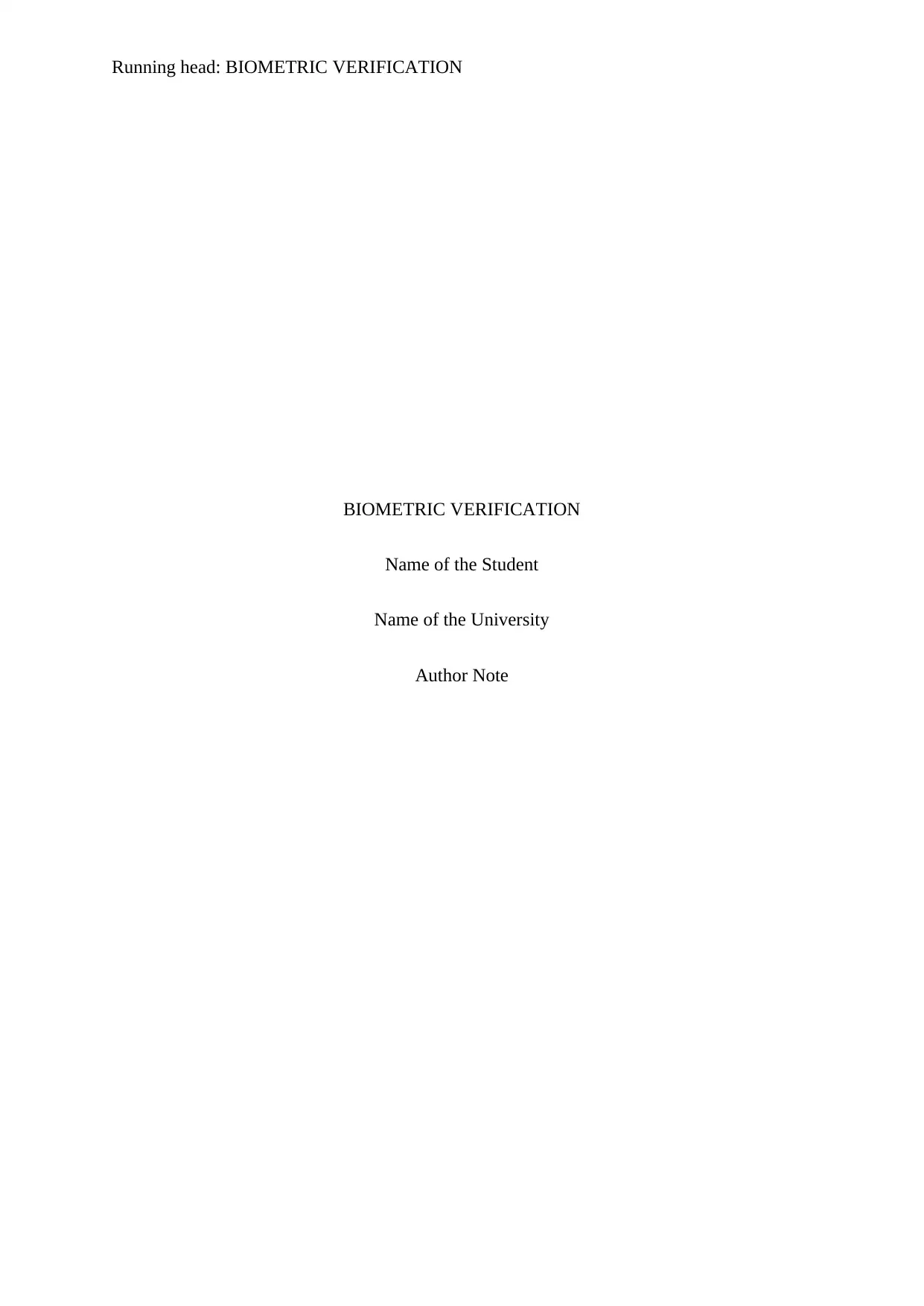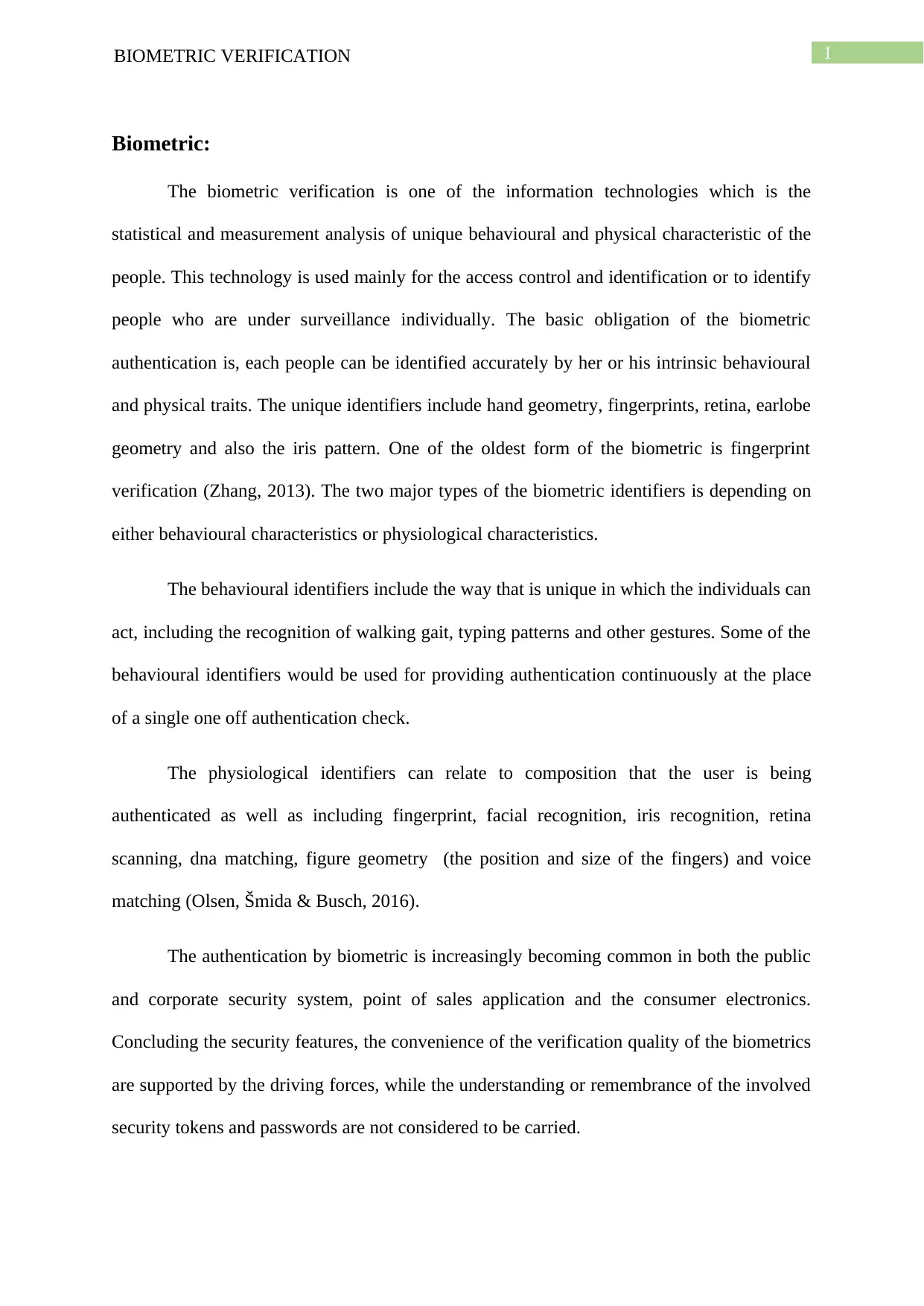Biometric Verification Report - AI, Security Systems and Applications
VerifiedAdded on 2023/01/16
|3
|388
|88
Report
AI Summary
This report explores the field of biometric verification, focusing on its application within artificial intelligence and security systems. It delves into the various methods of biometric identification, categorizing them into physiological and behavioral characteristics. The report highlights fingerprint verification as a prominent example of physiological biometrics, while also discussing other aspects like hand geometry, retina scanning, and voice matching. Furthermore, it examines the importance of biometric authentication in both public and corporate settings, emphasizing its role in enhancing security and convenience. The report also references key publications in the field, providing a comprehensive overview of biometric technologies and their significance.
1 out of 3









![[object Object]](/_next/static/media/star-bottom.7253800d.svg)